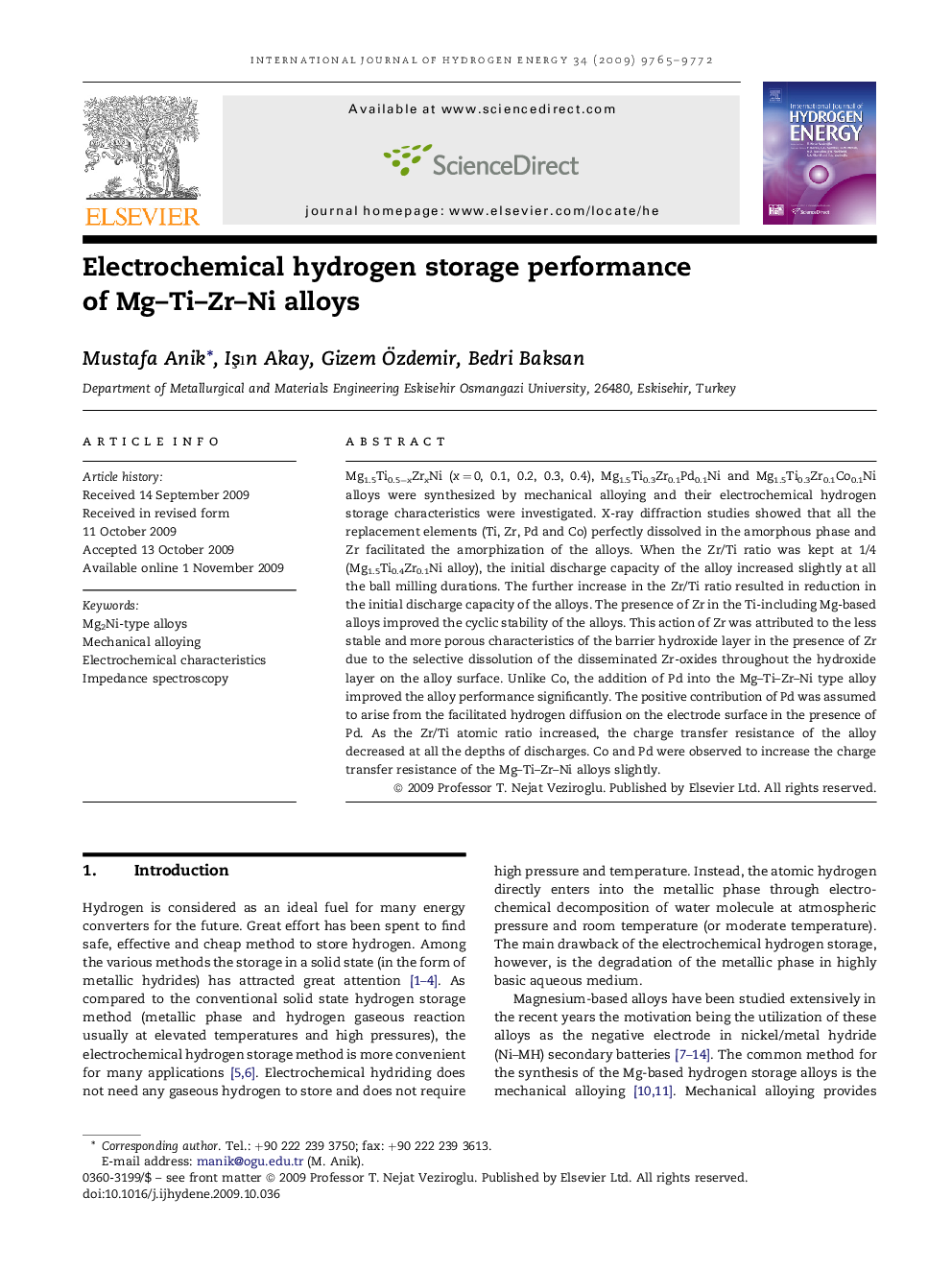| Article ID | Journal | Published Year | Pages | File Type |
|---|---|---|---|---|
| 1278205 | International Journal of Hydrogen Energy | 2009 | 8 Pages |
Mg1.5Ti0.5−xZrxNi (x = 0, 0.1, 0.2, 0.3, 0.4), Mg1.5Ti0.3Zr0.1Pd0.1Ni and Mg1.5Ti0.3Zr0.1Co0.1Ni alloys were synthesized by mechanical alloying and their electrochemical hydrogen storage characteristics were investigated. X-ray diffraction studies showed that all the replacement elements (Ti, Zr, Pd and Co) perfectly dissolved in the amorphous phase and Zr facilitated the amorphization of the alloys. When the Zr/Ti ratio was kept at 1/4 (Mg1.5Ti0.4Zr0.1Ni alloy), the initial discharge capacity of the alloy increased slightly at all the ball milling durations. The further increase in the Zr/Ti ratio resulted in reduction in the initial discharge capacity of the alloys. The presence of Zr in the Ti-including Mg-based alloys improved the cyclic stability of the alloys. This action of Zr was attributed to the less stable and more porous characteristics of the barrier hydroxide layer in the presence of Zr due to the selective dissolution of the disseminated Zr-oxides throughout the hydroxide layer on the alloy surface. Unlike Co, the addition of Pd into the Mg–Ti–Zr–Ni type alloy improved the alloy performance significantly. The positive contribution of Pd was assumed to arise from the facilitated hydrogen diffusion on the electrode surface in the presence of Pd. As the Zr/Ti atomic ratio increased, the charge transfer resistance of the alloy decreased at all the depths of discharges. Co and Pd were observed to increase the charge transfer resistance of the Mg–Ti–Zr–Ni alloys slightly.
